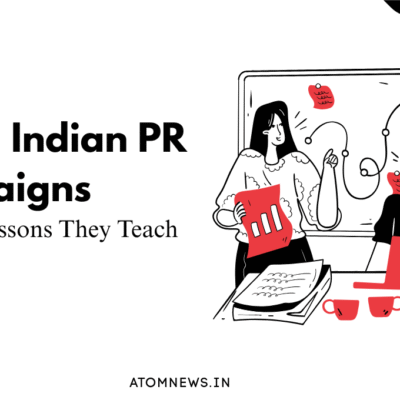Public Relations plays a critical role in shaping the credibility and visibility of Indian startups. Yet, many young companies underestimate the complexity of PR and treat it as a short-term visibility tool rather than a long-term reputation-building function. As India’s startup ecosystem expands across fintech, SaaS, consumer brands, mobility, edtech and D2C, the pressure to stand out has grown sharply. However, in this rush to be noticed, many founders repeat the same mistakes—often costing them media trust, audience interest and brand reputation. Here are the most common PR errors Indian startups make, and why avoiding them is essential for sustainable growth.
1. Treating PR as a One-Time Activity
A common misconception among Indian startups is viewing PR as an occasional push—usually around funding announcements, launches or major partnerships. This episodic approach results in inconsistent visibility and prevents long-term narrative building. PR requires continuity, not campaigns. Journalists, industry stakeholders and even customers notice brands that communicate consistently, not only when they need attention.
2. Focusing Only on Tier-1 Media Coverage
Many founders chase Tier-1 publications as the only measure of PR success. While national media visibility is valuable, it’s not always the most impactful. For early-stage startups, regional media, niche industry platforms, and category-focused publications often deliver deeper engagement and more relevant audiences. The obsession with only top-tier media limits a startup’s reach and relevance.
3. Sending Generic, Non-Compelling Pitches
Most journalists today receive hundreds of pitches daily. Generic emails, templated outreach or vague storytelling do not stand out. Startups often fail to provide journalists with a clear angle, meaningful data, relevant market context or human insight. Without a compelling narrative, even good products fail to earn coverage. Strong PR requires sharp positioning and a story worth telling.
4. Over-Claiming and Under-Delivering
In an attempt to appear groundbreaking, some startups exaggerate claims—overstating scale, user numbers, market size or revenue. This damages credibility when reporters fact-check, or when the numbers eventually contradict public statements. Authenticity is essential. Journalists value accuracy and transparency far more than inflated metrics or unrealistic promises.
5. Ignoring Regional Storytelling Opportunities
India’s digital audience is multilingual, yet many startups stick only to English communication. This limits audience expansion. As more users from Tier-2 and Tier-3 cities adopt digital platforms, regional media becomes a powerful channel for growth. Startups that avoid multilingual storytelling miss out on massive customer segments and media opportunities.
6. Not Preparing Founders for Media Interactions
Another frequent issue is treating media interviews casually. Founders often enter conversations without clear talking points, narrative structure, or a consistent message. This results in miscommunication or an unfocused conversation. Media training, briefing notes, and message alignment are essential before speaking to journalists. A single poorly handled interview can affect brand reputation significantly.
7. No Crisis-Readiness Plan
Many startups believe crises “won’t happen to them” until they do—whether it’s a product failure, customer complaint, data error, financial misstep or social-media backlash. Without a crisis framework, responses often become defensive, late or incomplete. Startups fail not because of crises, but because of unpreparedness. A clear crisis communication plan is vital for safeguarding reputation.
8. Ignoring Thought Leadership and Industry Visibility
Founders who rely solely on media mentions miss the larger opportunity: establishing industry authority. Thought leadership through authored articles, LinkedIn insights, expert commentary and panel participation helps position the startup as a credible voice. Many startups don’t prioritise this, thereby losing long-term strategic visibility and influence in their sector.
9. Measuring PR Only by Coverage Quantity
Some Indian startups judge PR success purely by the number of articles published. This narrow approach overlooks far more important metrics—audience quality, sentiment, share of voice, message pull-through, and long-term brand impact. Effective PR focuses on the quality and relevance of visibility, not the volume of links generated in a day.
10. Not Aligning PR With Business Outcomes
The biggest mistake is treating PR as separate from business goals. When PR messaging is not aligned with product growth, customer acquisition, investor expectations or market positioning, communication becomes scattered. PR should amplify the business strategy—not exist outside it. Startups that integrate PR with product, marketing, investor relations and leadership communication see stronger, more measurable outcomes.
The Bottom Line
PR is no longer a luxury for Indian startups—it’s a strategic necessity. In a crowded marketplace where trust, visibility and narrative shape brand perception, avoiding these mistakes can significantly strengthen a startup’s position. The startups that succeed with PR are those that treat it as a long-term investment, build authentic stories, stay consistent and focus on meaningful engagement rather than vanity visibility. In an era of intense competition and shrinking attention spans, thoughtful and well-executed PR is one of the most powerful tools for growth.





